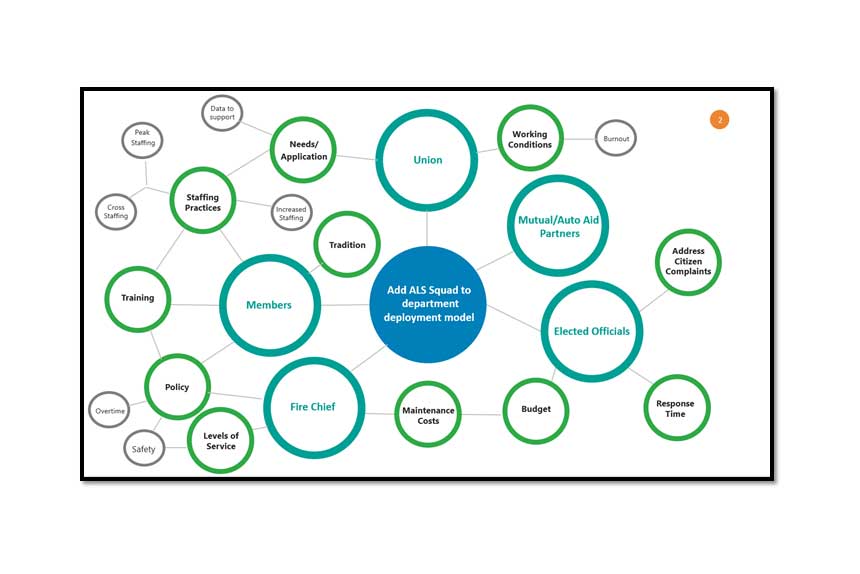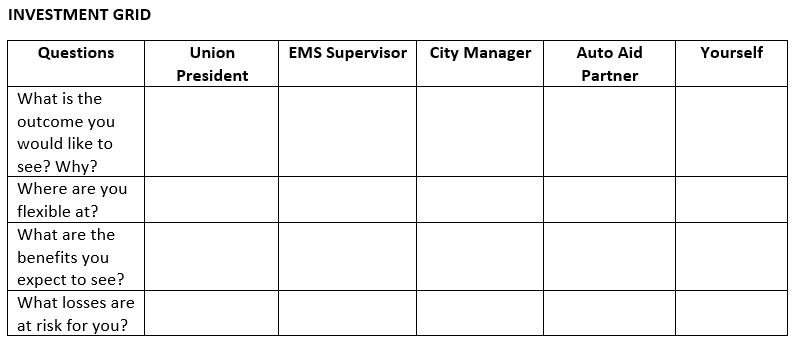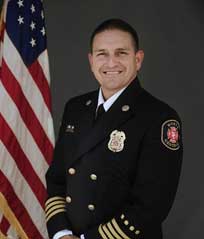
By Jacob McAfee
In any profession, decisions are made every day that change the course of all future events, large and small. While a decision in and of itself may seem easy, most easy things are hard. In the fire service, the number of variables that go into these decision processes can grow into a web of stakeholders, inputs, outcomes, experiences, training, vicarious learning, and physical and emotional investments that may need to be analyzed. Considering these variables, determining the best course can take either seconds or significantly longer, depending on the leader’s experience, relationships, position, or the seriousness of the decision. Almost all decisions have an external or internal impact on someone or something. Seemingly small decisions (washing the apparatus at night versus in the morning before a shift change) or large decisions (shutting down fire stations) are impacted by the variables within the decision matrix, including the self-preservation of the decision maker. This applies to people above and below you, as you navigate or communicate the leader’s intent, politics, emotions, personalities, data, and strategic alignment towards common goals.
Any decision will typically affect more people than originally anticipated. Knowing this and identifying where each stakeholder’s interest lies may help you as you navigate the decision-making process. For decisions of a non-emergent nature that have the luxury of time, there are multiple collaborative and innovative processes that allow you to make informed decisions. The goal is to ensure that all stakeholders feel like their concerns were either addressed, considered, or will be addressed in future planning opportunities. Almost no decision is made by one individual. It is made with the understanding that internal and external influence exist. Considering each stakeholder’s interests along with your experiences will be key to a confident decision. Being able to do this effectively at any level can sometimes be referred to as political acumen. This skill pushes you to think like a politician without having to act like one. No matter your rank, the ability to think systematically with political acumen will allow you to reach across boundaries, interests, relationships, and alliances both to make more informed decisions but increase the impact of that decision.
The more effective you are at understanding everyone’s interests, the more effective you will be at creating a dynamic and adaptive dialogue, encouraging movement and action through your decision as opposed to argument and opposition. Remember that no decision is perfect, nor will it have full buy-in from all sides of the table. The key here is that you address stakeholders, make each person feel heard, and disregard no one. Disregarding stakeholders can make a small problem bigger and give you problems when your interests cross down the line. You can never fully anticipate when and whom you may need support from in the future and there may be alliances that you don’t anticipate in the long game.
Leaders who focus on the people impacts from the decision and practice political acumen establish themselves as well equipped to make informed decisions. These leaders will be able to create and sustain relationships across all factions or groups; educate external stakeholders on their organizations value; more effectively develop board “buy in” at all levels; and be better equipped to make a persuasive case for their decision.
So how do you find these hidden interests or stakeholders so you can make informed decisions?
Although I’m no expert, some of the practices I have had success with revolve around two main themes: relationship building and some type of cause-and-effect analysis. Relationship building means finding out by doing. Immerse yourself with the other group and seek understanding of their position and/or recognize the “influential players” and listen to what they are saying. More times than not, people put their interests on display, but they are may be obscured by bias or common talk. Listening can provide great insights.
Cause-and-effect analysis means using tools and exercises to gather information. As you go through these drills, common stakeholders emerge. These exercises uncover common positions or deeply held values. In this way you can understand various perspectives quickly.
Here are three potential tools/exercises for you to use when collaborating with your team to help uncover positions and investments across stakeholders that improve the quality of your decision.
- Investment grid
- Fish bone chart
- Mind mapping

Investment Grid
In the investment grid you will have the far-left column with questions you want answered. In the remaining columns on the top row you will have factions or stakeholder groups. In each box below, you will put how the group answered the questions in the far-left column. As these questions are answered you will understand everyone’s position, their desired outcome, how committed they are to it, and what may influence them to move more left or right.
This chart is expandable depending on the decision and the number of stakeholders involved. The below is only an example, as questions and stakeholders can change an unlimited amount of times.

Fish Bone Chart
Above is a sample look at a “fish bone” chart. The fish bone chart can identify potential root causes of problems, and can be done prior to a decision or after, once challenges appear. The way to use this tool is to group various causes into categories. In this case the causes are organizations, people, builders, site, planning, and equipment. The causes cascade from the main categories, flowing toward the effect, forming what resembles a fish bone appearance. The idea here is to identify the potential problems or stakeholder interests that may be related to the problem. This allows you to identify the root cause and can help you make informed decisions more effectively by rooting out potential issues on the front end. As you do this more, it can be applied to small everyday decisions and done rapidly.

Mind Mapping
Mind mapping starts with one main idea that you may need to implement at your department.
- Start by writing the main idea in the center of your paper, white board, screen or whatever you have available.
- Once your main idea is down you and your team should, start to think of major subtopics that will affect your main idea. Identify as many as possible.
- Expand on these further to identify opportunities, challenges, stakeholder investments, and more.
- Once you are done doing this for one subtopic, move to another.
- This progresses until you have mapped out all the potential items or topics related to your main idea.
When you are finished, you have a comprehensive layout of what or who needs to be addressed before you move on your decision. When the decision is made, you will have done everything you can to avoid significant challenges or backsliding later on.
You can also use it to identify all the groups, players, or people who will be impacted by the decision or goal. This will help you recognize who you need to talk with more, what they want to know, how you need to approach the situation, and what positive or negative impacts may come from the decision. In this example, the goal is to implement an ALS squad company as part of a department’s deployment model. The larger green rings are the main stakeholders, the smaller green rings the subtopics, and the smaller grey circles are all the factors that affect each subtopic. This is just a small example. In this case, the stakeholders may grow exponentially depending on your department or jurisdiction.
Although these tools are extremely basic, they can assist you in developing your political acumen during the decision-making process. Over time, as you do this more often, you will start to see trends in the way certain groups or people think or the things they care about. This further develops your mental slide deck through the relationships you have built and your investment in understanding the formal and informal influences that shape decision making. You will over time be able to see the impacts of your decision and who it will influence early and at a faster rate.
Eventually, you can make the best decisions quickly by using the orient, observe, decide, and act (OODA) loop cycle. According to Boyd, “decision-making occurs in a recurring cycle of observe–orient–decide–act. An entity (whether an individual or an organization) that can process this cycle quickly, observing and reacting to unfolding events more rapidly than an opponent, can thereby ‘get inside’ the opponent’s decision cycle and gain the advantage.” Boyd talks about the “orient” phase as one of the most important, since here you take all of your previous experiences and knowledge into account and analyze it with all of the observations you have made to ensure what you observed and how you are oriented match. After these stages you move to the decision phases (DA). Think of my previous discussion on the decision tools in use. After you have done them with similar people, in similar groups, or working for similar agencies, all the information you have gathered becomes part of a quick observation and orientation of the people and environment, enabling you to make a quick decision. As you do this more frequently in the various places you go, the OODA loop process becomes a more successful way to take decisive action.
The methods outline above are some tools for your decision-making toolbox. Decisions are not always easy; they involve many layers of influence from all directions. The more you undertake this process, the more prepared you will be to follow through with your decision, both now and in the future.
 Jacob McAfee, EFO, CFO, CTO, MIFireE is the deputy fire chief for the North Central (CA) Fire Protection District and past Fresno City College Fire Academy Director. He is a former DoD Fire Chief and has 20 years of fire service experience. In that time, he has worked in four different states and held a chief officer position in every fire service division. He is a registered instructor for the California State Fire Marshal’s Office and the California Specialized Training Institute. He completed National Fire Academy Executive Fire Officer Program (EFOP), and holds Chief Fire Officer (CFO) and Chief Training Officer (CTO) credentials from the Center for Public Safety Excellence (CPSE).
Jacob McAfee, EFO, CFO, CTO, MIFireE is the deputy fire chief for the North Central (CA) Fire Protection District and past Fresno City College Fire Academy Director. He is a former DoD Fire Chief and has 20 years of fire service experience. In that time, he has worked in four different states and held a chief officer position in every fire service division. He is a registered instructor for the California State Fire Marshal’s Office and the California Specialized Training Institute. He completed National Fire Academy Executive Fire Officer Program (EFOP), and holds Chief Fire Officer (CFO) and Chief Training Officer (CTO) credentials from the Center for Public Safety Excellence (CPSE).
ALSO

